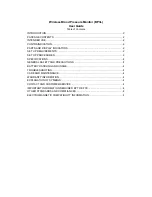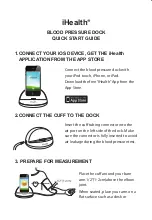
english
B
EN-40
EN-41
english
B
Operating the unit
Operating the unit
• Switch on the unit by pressing the Start/Stop button.
The following display is visible.
• The automatically controlled inflation process begins
once the unit has completed its calibration against the
ambient air pressure.
• Then the actual measurement process starts while
the cuff is being deflated. The “
♥
” symbol flashes in
the display, and a beep sounds to denote the pulse
frequency.
• A long beep denotes the end of measurement. The cuff
is automatically deflated.
8. Measuring blood pressure
• Lay your extended and relaxed arm with the cuff on the dining table and do
not move it during the measurement; do not talk. The palm of your hand should
be facing upwards.
• Connect the cuff connector to the cuff socket on the left-hand side of the unit.
Make sure the connector is fully inserted into the unit.
• The cuff is inflated to the required pressure. A “
▲
”
flashes in the display.
• The determined values of systole, diastole and
pulse and the pulse pressure (PP) are shown
alternately in the display.
• The unit switches off automatically after approx.
3 minutes.
Systolic pressure
= Upper value
mmHg**
Diastolic pressure
= Lower value
mmHg**
Red
from 140*
from 90*
Yellow
120 to 139
80 to 89
Green
below 120
below 80
9. WHO traffic light function
The unit categorises the blood pressure readings according to the guidelines of
the World Health Organisation (WHO). You can use the coloured fields to read the
categorisation of each reading:
WHO 2003
* It is sufficient
for one of the
values to be
raised.
– Lower dot (Green) signifies normal value
– Middle dot (Yellow) signifies borderline value*
– Upper dot (Red) signifies high pressure*
The categorisation according to WHO is stored with the readings and can be called
up again together with the readings from the memory.
** millimetres of
mercury
















































